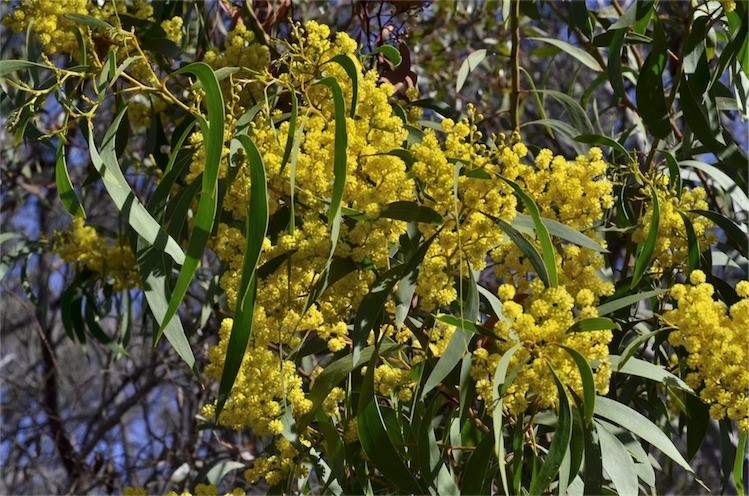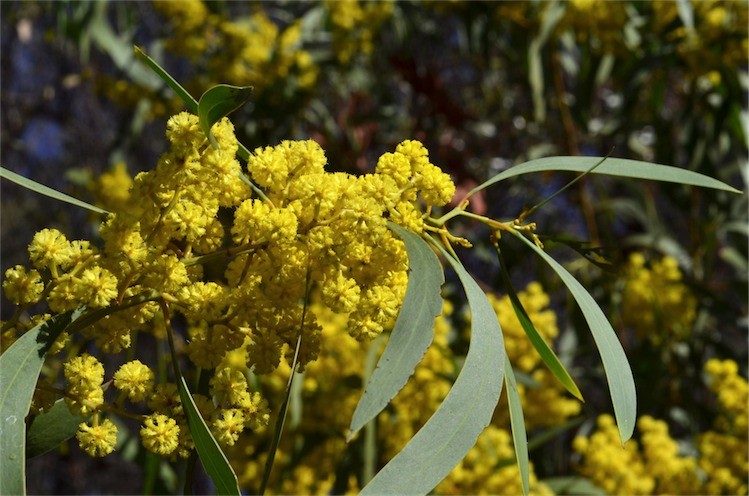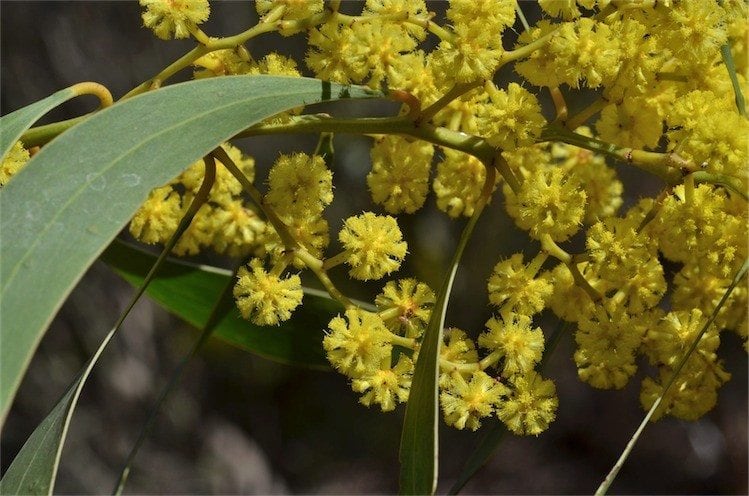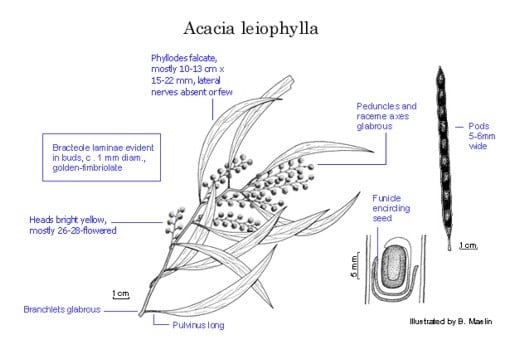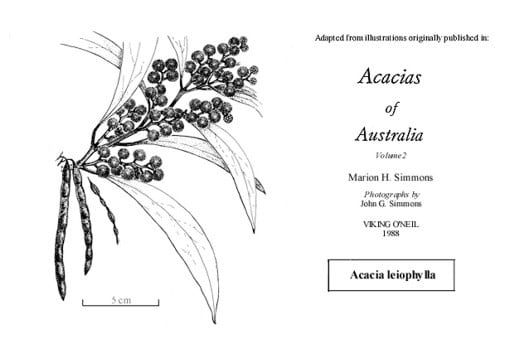Acacia leiophylla Benth.
WATTLE
Acacias of Australia
Family
Fabaceae
Distribution
Occurs in coastal regions of S.A. from the Eyre Peninsula, near Coffin Bay, to near Mount Gambier.
Description
Shrub or tree to 4 m high. Branchlets somewhat flexuose, glabrous. Phyllodes falcately recurved, with pulvinus 9–12 mm long, (7–) 10–13 (–20) cm long and (10–) 15–22 mm wide, broadest near or above middle, much-narrowed at base, thinly coriaceous, glabrous, 1-nerved per face; lateral nerves absent or few and obscure; gland not prominent, normally 0–8 mm above pulvinus. Inflorescences numerous-headed racemes, sometimes in terminal panicles; raceme axes mostly 3–7 cm long, glabrous; peduncles 3–5 (–7) mm long, glabrous; heads globular, densely (24–) 26–28 (–31)-flowered, bright yellow; bracteole laminae conspicuous in buds, c. 1 mm diam., brown, densely golden-fimbriolate. Flowers 5-merous; sepals c. 3/4–5/6-united. Pods linear, raised over seeds, to 12.5 cm long, 5–6 mm wide, firmly chartaceous to thinly coriaceous, glabrous. Seeds longitudinal, oblong, 5 mm long; funicle encircling seed in a single fold, dark red-brown; aril clavate.
Habitat
Grows mainly in sand or loamy sand, in open scrub associated with Mallee eucalypts.
Specimens
S.A.: 42.6 km S of southern turnoff into Keith on road to Naracoorte, N.Hall H80/91 (PERTH); 10 km SW of Port Lincoln grain silo, L.D.Williams 9705 (AD).
Notes
A member of the ‘Acacia microbotrya group’, related to A. retinodes which is distinguished especially by its shorter pulvinus, inconspicuous bracteoles and straighter, thinner phyllodes. It is also allied to A. alcockii and possibly hybridises with A. anceps on southern Eyre Penin., S.A., fide B.R.Maslin & D.J.E.Whibley, Nuytsia 6: 22 (1987). In the past A. leiophylla has been confounded with A. pycnantha which is readily distinguished by its globular to obloid, 40–80-flowered heads, smaller, white-fimbriolate bracteoles, short funicles which do not encircle the seeds and phyllodes with a more obvious pennivenation.
FOA Reference
Data derived from Flora of Australia Volumes 11A (2001), 11B (2001) and 12 (1998), products of ABRS, ©Commonwealth of Australia
Author
B.R.Maslin
Minor edits by B.R.Maslin & J.Rogers
This identification key and fact sheets are available as a mobile application:
URL: https://apps.lucidcentral.org/wattle/
© Copyright 2018. All rights reserved.

